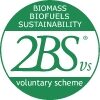We would like to announce a series of updates and clarifications to our certification process. As we continue to evolve and refine our quality standards, it’s essential for us to keep you informed of the latest developments. These adjustments are designed to ensure that our certification is more accurate, transparent and adapted to the changing needs of our industries.
Discover the details of these changes and their implications for you below.
1. Concerning internal audits
One of the major objectives of internal audits is to verify the veracity of each supplier’s self-declaration. The farmer’s self-declaration does not constitute proof of auditing, and certification of honour must be verified by an annual internal audit.
To verify the farmer’s self-declaration, the First Gathering Point (cooperative) can:
- Organize a visit by a representative of the cooperative to check the veracity of the self-declaration (with proof of visit and certificate of verification of the self-declaration, as well as follow-up in the event of non-compliance).
- Verify points 1 and 2 of the self-declaration concerning land sustainability by comparing farmers’ parcel registers with reference maps via official portals.
Calibration of the need for site visits is dictated by the availability of evidence of self-declaration deployment. When 100% of suppliers have been controlled via official mapping portals, when the method of calculating GHG emissions is not in actual value, and when all the records/information/actions provided through the self-declaration have been supplied and/or deployed by the farmer, then the internal audit can be carried out remotely.
To ensure the smooth implementation of indicator 0.3.3 of our Standard 01, we have temporarily agreed to downgrade this indicator from major to minor (until the next follow-up audit in 2025). This protects the operator from suspension of the certificate if a non-conformity is found concerning this requirement while retaining traceability of the need for corrective action, which will have to be deployed before the next audit.
Note that a minor non-conformity does not lead to suspension of the certificate, unlike a major non-conformity.
The totality of the issues at stake in the internal audit is not exclusively sustainability and cartographic verification of sustainable lands, but also:
- training of the First Gathering Point staff
- GHG controls on agricultural inputs
- Farmer training
- And, where applicable, control of the impact of agricultural residues removed from the soil (straw collection).
2. Concerning the list of 2BS material names
Here you’ll find the latest version of this list, along with a French translation. In this new version, there have mainly been additions of materials. Please implement this list for future audits.
3. Concerning proof of sustainability (POS) in the methanization sector
For units commissioned before 01/01/2021: there are no requirements concerning greenhouse gas (GHG) emissions, and consequently, no mention of GHG emissions is currently made on the POS. However, after a careful review of the Implementing Regulation 2022/996 (Annex I; c) II), it is stated that GHG emissions must be included in the POS.
Consequently, even for units commissioned before 01/01/2021, GHG emissions must be now indicated on the POS and verified by the auditors (during the next follow-up audits), although no GHG emissions savings threshold is to be reached.

